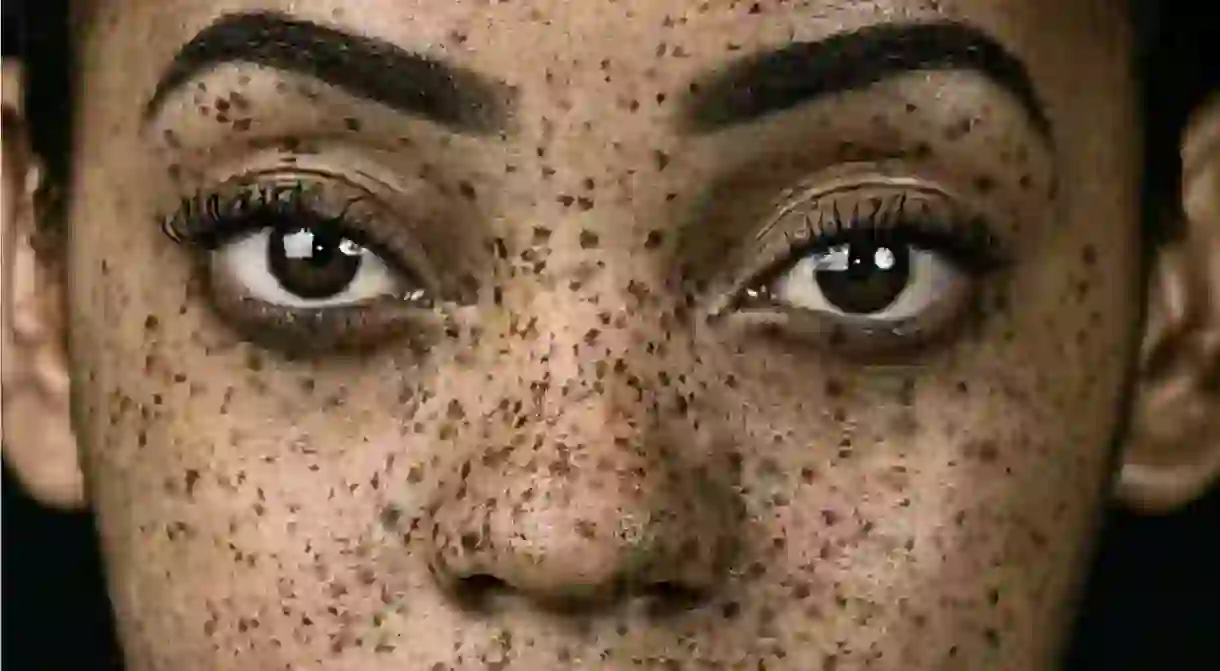Meet Sphiwo Hlatshwayo, South Africa's Up-and-Coming Photographer

South African photographer Sphiwo Hlatshwayo has catapulted onto the international art scene with her striking portraits.
Hlatshwayo recently made the shortlist at the Sony World Photography Awards with her portrait Redivine, and the Johannesburg-based photographer continues to forge her own path through the industry.
Through careful composition, high saturation and a sharp eye for models and subject matter, she’s managed to produce a variety of photographs with the ability to move and inspire her audience.

Culture Trip: Can you tell us about your use of colours? The bright and bold contrasts really make your images stand out. What are you hoping to achieve or communicate with this approach?
Sphiwo Hlatshwayo: I didn’t realise that I create my images with highly saturated colours until my amazing photography lecturer in college pointed it out. Since then, that’s what I’ve been running with. Bright and bold contrasts allow my images to stand as their own statement pieces.
My work is heavily influenced by the subject. I usually look at a random picture of them and think to myself what colours, background and setting I’d like them to be in. Often, I don’t see an image in my head straight away, but my ideas unravel themselves during the process of creation. So this approach also allows me to take an essence of the subject and translate it into imagery. So it’s like my images tell short stories about the people in them, through use of colour and contrast.
CT: Many of your photographs have a surreal feel to them – even seemingly straightforward portraits. Is this intentional?
SH: Surreal. That’s the first time I’ve heard that. I guess that’s the fruits of my creativity. I really love the in-between moments where it’s just flowing and I’m giving little direction. I always encourage my subjects to be themselves.
During the selection process, I tend to choose images where there’s a subtle bit of emotion showing. I focus on emotion rather than poses. That’s how my images are able to be present in the moment with you, while drawing you into the world that the subject is in.

CT: You describe yourself as a ‘young South African black female pioneer’. How does your life as a young black South African woman influence your art?
SH: My family actually helped me construct that line. My dad and brother-in-law have a huge influence on my life, and they always teach me to work smart. My mom, older sister and younger sister have taught me strength and resilience. I’m always encouraged to continually be bold, while always remembering where I come from and to be the best I can be in whatever I do.
My family teach me the most important life lessons about being proud to be black and female in today’s societal structures. And that humbles me every day. That’s how I approach my creation process: with humility.
There’s a demand for young, black talented ladies such as myself in the photography field, and that on its own is motivation for me to make a difference with my art, not only for myself, but for others as well.
CT: How do you view the role of social media for creatives? As a professional photographer, do you think too much is made of likes and shares on platforms like Instagram, or is it an essential tool for your business?
SH: For creatives, social media is a playground for us to express ourselves however we choose, which if applied with strategy and robustness can be used in our favour to multiply and, most importantly, share our craft with the world. Technically, social media can become a channel that creates a source of income for you if you stay consistently active (which is the major key).
I think that a large following, likes and shares have a big influence on the perceived quality of your work. So the more likes, follows and shares you have, the more likely potential customers are to trust your product or service, regardless of the actual quality of the product or service itself.

CT: How do you balance the creative versus business sides of things? Have you faced the conflict between producing work you truly love and are proud of, versus more corporate work that pays better? From your portfolio, it appears as if you have made very few compromises of your creativity and style.
SH: Oftentimes, I’m led by the business side of things rather than the creative, because I am still establishing a set foundation which I can later mould around my creativity. It’s a process of self-discovery, so I’m still finding what works for me.
Yes, I have faced conflict, where I sometimes find myself spending little to no time with my craft other than when I’m working to make money. However, I don’t look at that as a bad thing, but rather as something that is equipping me to later run my business with ease, especially once I incorporate my own creativity into it. I will always try to experiment with my photography, even in a corporate environment.














